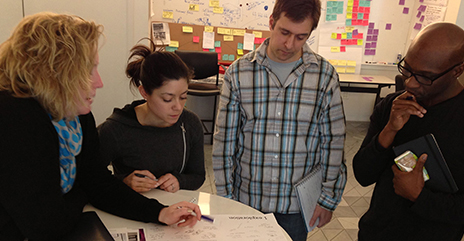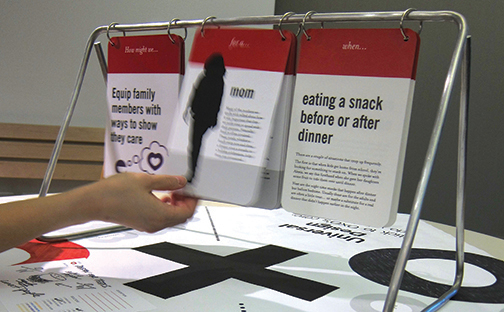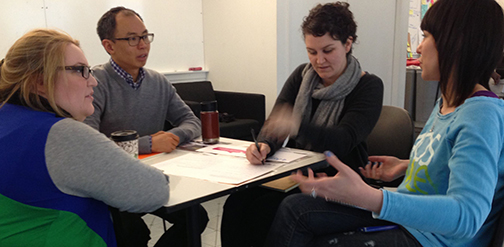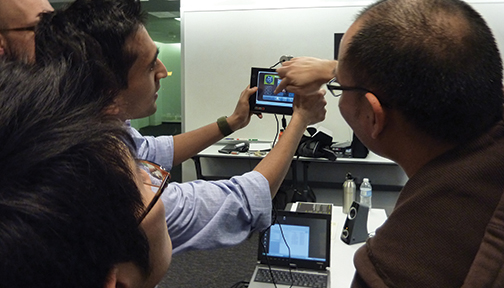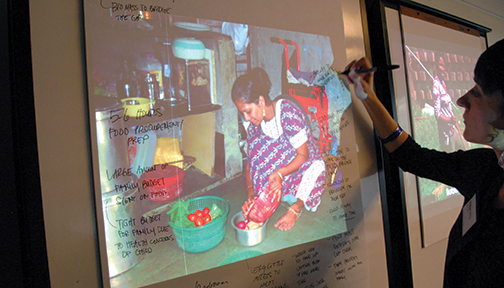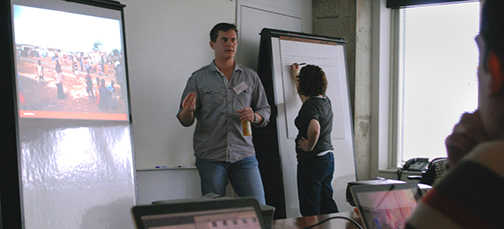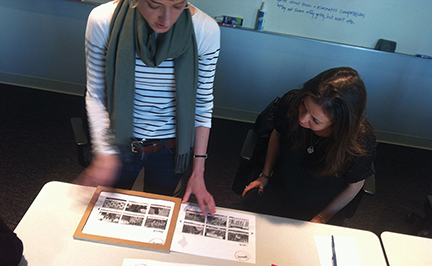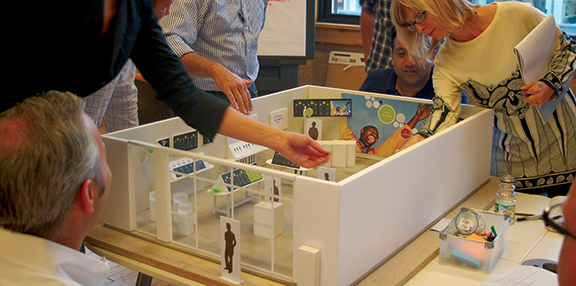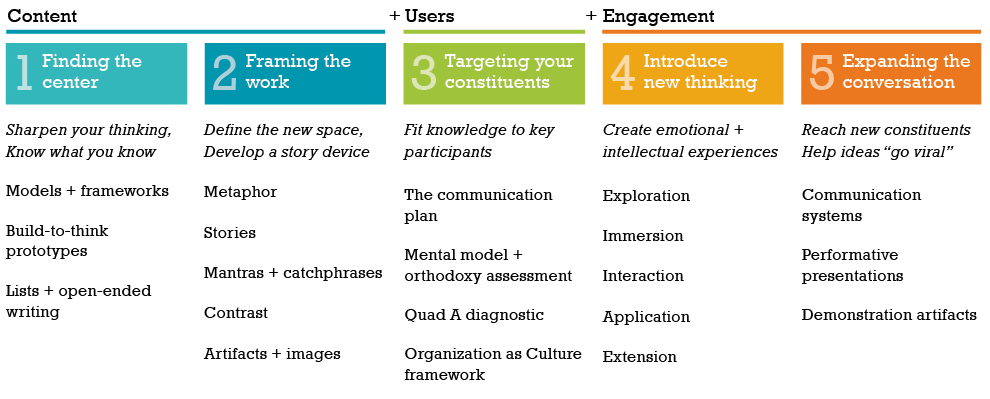For those tasked with innovation, creating anything new—whether a product, service, experience or process—requires more than simply coming up with the best idea. It requires the engagement and alignment of the many individuals inside organizations who are important to its success.
In Communicating the New, professor and innovation consultant Kim Erwin calls out the role of communication in the innovation process as a powerful integrative tool for individuals and teams to define, accelerate and explain The New.
In collaboration with over 30 contributors at the forefront of innovation, she defines a new communication mission for innovators. To support this new mission, Communicating the New presents a framework and methods to help innovators address 5 distinct moments in which communication methods can advance the development process.
DOWNLOAD A SAMPLE CHAPTER HERE
What others are saying:
Zenstorming's Michael Plishka offers his own full length review here:
http://zenstorming.wordpress.com/2013/12/30/communicating-the-new-a-book-review/
“Communicating radical innovation is very different from discussing marginal change. Erwin’s book provides a serious analysis of why, in this era of VUCA—Volatility, Uncertainty, Complexity and Ambiguity— we need to change our individual and organizational modes of communication. Erwin then provides a series of concrete, practical communication methodologies that we so need. “Communicating the New” is a book that needs to be offered in all of our best business-school classes.”
“This book is a must-read for any team leading change inside of a corporation.
The magic is Kim´s emphasis on the audience. Rather than one way communications to convince (aka. get buy in), Kim shifts to truly understanding teams, constituents and corporate culture. These audiences are the drivers of and participants in the creation of meaning, relevance and value of new ideas. This engagement is the foundation for lasting change.
As a result of reading this book, I am already rethinking how I am approaching, positioning and discussing the work we do within Telefonica.”
“Erwin’s approach is a standout - fresh and contemporary, in an easy-to-digest format, this book is immediately actionable and pragmatic. If you are in a career that requires you to influence, convince, convey and implement, or if you are being asked to come up with “what’s next, what’s new?”, then this book is for you. This is going to be one of those well-loved, dog-eared companions that I pull out every few months to remind myself to spend as much time on the “how” vs. “what” I want to communicate.”
“I was hooked instantly. The names of people that I should give this book to keep building with each new chapter. Communicating the New is thorough as well as thoughtful in providing an impressive compendium of models, framework, methods and tools for navigating the 21st century challenges of creating The New. Finally, a useful resource to navigate the complexity of creating The New.”
“Erwin recognizes that when it comes to design and innovation, many of our Industrial Age tools are simply not up to the task. Communication in the context of creation means more than delivering a PowerPoint presentation or crafting a carefully worded email. Communication needs to be experiential. It needs to be more tangible and more visual. Emails may be easy to write, but in design, we often need to think outside the inbox.
The methods Erwin outlines in this book have never been more relevant. Design in the 21st century involves an ever-increasing roster of highly specialized experts. If you want to rally these specialists to create something great, you’ll need to be a good communicator. As former Coca-Cola CEO Roberto Goizueta said, “Communication is the only task you cannot delegate.””
“One of the main problems with executing innovation in organizations is also one of the least obvious. ‘Communicating The New’ reminds us about an often neglected but crucial part in the innovation process. Applying the principles contained in this book will increase your chances for innovation success, both inside your company—overcoming organizational barriers, as well as outside—convincing your customers.
This is an essential read for those who not only preach for improving the current state of things, but more important to those responsible for executing it.”
5 ways communication methods accelerate innovation
How to help teams find the conceptual center of their work?
How to achieve alignment around what's known, desired and proposed?
Because creating The New involves the integration of many forms of data and insight— such as market data, industry trends, user context, cultural change, emerging technologies—helping teams know what they know takes time.
Individuals and teams need help achieving two critical objectives: quickly achieving clarity around the problem or the proposition, and building that all-important alignment in the larger working team. Tools and methods that address this situation are considered in Chapter 1: Finding the Conceptual Center.
How to give a concept shape, texture and definition?
And how to frame the work in ways others can understand and remember?
Teams need help framing their thinking, especially in the early stages, in
ways they and others can understand and remember. The objective is to do so in
a way that creates a fresh mindset, so that the new proposition has focus,
meaning, texture and accessibility. The framing techniques in Chapter 2 offer a simple way to test a group's thinking about The New, using language to prototype the concept.
How to identify and target constituents for The New?
How to pre-empt the power of no?
How build a strong network of collaborators and contributors that will accelerate and champion The New?
In business schools it has become standard
practice to train students in stakeholder interviews. Few other professions
focus on how to size up the human beings who need to be invested in the
project.
But even MBA programs tend to favor functional assessments – what do people do and buy – over holistic assessments – who are they, and how do they live. Chapter 3 helps creators of The New cultivate deep curiosity and empathy for the people who will be engaged in The New over the long haul so as to more effectively engage them in the short term.
How to engage and introduce new thinking to others?
How to build belief, conviction and ownership around a novel and unfamiliar concept?
Innovators and entrepreneurs face significant hurdles in establishing the relevance and the potential of the New, especially with those who were not involved in its creation and yet who are essential to its success. Experiences can be a powerful platform with which to engage stakeholders of all levels. Chapter 4 presents a model for creating unconventional but effective engagement – a “design for experiences” framework.
How to signal early that new thinking is both underway and forthcoming?
How to create broader organizational pull for the The New?
Every team should be thinking early about how to help projects “go viral” inside the sponsor organization. We need to draw attention to an initiative before synthesis is finished, laying early groundwork for what comes later. And we need to create channels for diffusing ideas as they are ready for review. Chapter 5 presents tools for getting the word out and creating widespread support for The New.




